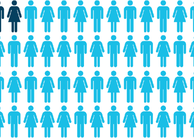Higher Education Reform in Florida: Considering Senate Bill 1720, Remedial Education, and College Readiness
By
2015, Vol. 7 No. 04 | pg. 1/1
IN THIS ARTICLE
KEYWORDS
AbstractSenate Bill 1720 took effect in the state of Florida in 2014. This new education policy makes college placement tests and remedial courses voluntary for many students preparing to enter college, with the aim of providing better access to college for a large number of students in the state. The bill also attempts to alleviate budgetary concerns and enable quicker access to college-level work for students. However, the law fails to address the preparation gap that exists between secondary and post-secondary levels of education in the state and, as a result, it may have little or no effect on its intended outcomes since students not prepared to enter college in the first-place will likely fail college-level courses and create high drop-out rate, mitigating any positive impact on college graduates that the bill might otherwise have created. Senate Bill 1720, signed into law on July 1, 2013 in the state of Florida, makes college placement tests and remedial courses voluntary for many students preparing to enter college in the state. The new law currently applies only to state-supported colleges and universities and private institutions. As is common in many states, students entering college – whether graduating high school seniors or returning/adult students – would be required to take placement tests (also called entrance exams) whereby they would be placed in courses at appropriate educational levels based on their scores. According to a recent report on college readiness by the Florida Department of Education (2011), approximately 50% of students entering college in the state score low enough on such entrance exams to be placed in remedial (also called developmental) courses. These courses carry no college credit and are rather prerequisites to college level, credit-earning courses, but they are still as costly as their credit-earning counterparts for both students and institutions.New Educational RequirementsFlorida’s Senate Bill 1720 aims to address several issues that are common in secondary and post-secondary education in the state of Florida. Among others, the following main areas are addressed by the bill (Florida Senate, 2013):
Analyzing the New PolicyAs a result of this new education policy, it is widely expected that many students entering state colleges Florida will be more unprepared in the future than they have been in the past. According to the Florida Department of Education’s own reporting (2011), almost half of all students entering state-supported post-secondary institutions were deemed not college-ready and therefore were being placed in remedial courses. Making the same remedial level courses voluntary for those same students is bound to have an impact on all such institutions. “Students who are not truly college ready and choose not to complete the necessary developmental courses have an increased risk of failing their college level courses.”
An example of a local state-supported college in south Florida that could be strongly affected by this law is Miami Dade College. Miami Dade College is the largest institution of higher education in the United States with a student population of over 175,000 (Miami Dade College, 2014). The multiple levels of remedial mathematics courses currently in existence at Miami Dade College (MAT0018, MAT0020, MAT0024), where most incoming students would traditionally be placed prior to their first college credit course (MAT1033), can now be skipped altogether if students so choose (Miami Dade College, 2014). This can only mean a greater concentration of unprepared or under-prepared students in certain college “gateway” courses, such as Intermediate Algebra (MAT1033), thereby increasing pressure on students and faculty alike, as well as retention and success rates that traditionally have already been low for those “gateway” courses. “Students who are not truly college ready and choose not to complete the necessary developmental courses have an increased risk of failing their college level courses,” according to Lenore Rodicio, provost of Academic and Student Affairs at Miami Dade College (Herrera, 2014). The law certainly emphasizes the framework of state government spending for higher education, which has always been discretionary, however, the use of research-based evidence to support the promotion of one particular policy over another, correctly, and with little or no political bias is still doubtful (John, Daun-Barrnett, & Moronski-Chapman, 2013). At the national level, access to higher education is claimed to be a national imperative because of international competition. President Obama set the goal of having 60% of the population complete college degrees as a response to the declining U.S. ranking in college access (de Nies, 2010). President Obama is one of many calling for action on education reforms to expand preparation for and access to college. However, despite all such calls to action, a large disconnect between rhetoric about access and funding mechanisms that ensure opportunity seems to still exist. Enormous gaps that exist between access to college, persistence, and degree completion are simply not being addressed by initiatives such as those brought forth by laws similar to Florida’s recent education bill. Florida’s Senate Bill 1720 does seem to be in agreement with the national imperative of providing more, easier, and quicker access to what constitutes college (which remedial courses do not). By allowing many students to bypass one obstacle to quick access to college-level courses and the potential for completion of a degree, it does address the access issue. At the same time though it may create a disproportionate likelihood of failure to persist in college and complete a degree, if the issue of lack of proper preparation to enter college-level work is not addressed at the same time. There is an interesting divide even in perceptions of how well (or not well) high school courses prepare students to successfully enter college. High school teachers and college professors differ in their beliefs on the extent that this is occurring and college readiness, as well as retention and success rates at the college level, may very well be proof of this divide (Sadler & Tai, 2001, Greene & Forster, 2003). Retention and success rates at various state colleges have already seen a significant decline throughout 2014 which is attributed to the expectation of classes being filled with unprepared or under-prepared students exactly as most faculty and college administrators feared (Gao & Roubides, 2015). The new Florida law allows for more direct access to college for many students, which, by bypassing remedial education, has the potential to also cut the costs associated with having to take remedial courses. At first glance, this is a positive point from both lawmakers and students’ perspective – but it is definitely negative for the state-supported colleges that can expect loss of tuition revenue and lower retention, persistence, and success rates. However, this or other similar laws cannot properly address the likelihood that those costs would still have to be incurred by the students should unpreparedness results in failure at college-level courses which would then have to be repeated, as it currently (and already) seems to be the case. Moreover, an extrinsic effect of this new policy that could be detrimental for student retention, persistence, and success is the failure factor. Research has established that failure and/or repeated failure in taking courses in college is a significant factor that negatively affects retention of college students (Assiter & Gibbs, 2007). In other words, if students who are unprepared to enter college fail or continue failing college-level courses, then they are more likely to drop out of college altogether. ConclusionIn conclusion, Florida’s new education policy, as expressed by Senate Bill 1720, aims to provide for better access to college for a large number of students in the state. Theoretically, this will help the state with budgetary concerns and enable quicker access to college-level work for students. The law also intends to cut student costs for developmental education. Unfortunately, the law does not address the preparation gap that exists between secondary and post-secondary levels of education in the state and therefore it may have little or no effect on cutting college costs if students are not prepared to enter college and subsequently fail their college-level courses. Moreover, if unprepared students fail and continue failing their college-level courses, there is an increased risk that they will drop out of college altogether. As a result, the original issue of access to college may be transformed even though the ultimate goal of increasing the number of college graduates in the state may continue to stagnate. ReferencesAssiter, A., & Gibbs, G. R. (2007). Student retention and motivation. European Political Science, 6(1), 79-93. De Nies, J. (2010). President Obama outlines goal to improve college graduation rate in US: US ranks 12th globally, trailing Canada and Russia. Retrieved from http://abcnews.go.com/WN/president-barack-obama-outlines-college-education-goal-university/story?id=11359759 Florida Department of Education (2011). FTIC College Readiness. Retrieved from http://www.fldoe.org/fcs/osas/evaluations Florida Senate. (2013). Senate Bill 1720. Retrieved from http://www.flsenate.gov/Session/Bill/2013/1720 Gao, Y. & Roubides, P. (2015). OER-based & gamified MOOC as solution to changes in developmental education policies, Paper presented at 8th Annual Emerging Technologies for Online Learning Int’l Symposium, Dallas, TX. Greene, J. P., & Forster, G. (2003). Public high school graduation and college readiness rates in the United States (Vol. 3). New York, NY: Center for Civic Innovation at the Manhattan Institute. Herrera, G. (2014). New Bill Makes Remedial Courses Optional. Retrieved from http://www.mdc.edu John, E. P. S., Daun-Barnett, N., & Moronski-Chapman, K. M. (2013). Public Policy and Higher Education: Reframing Strategies for Preparation, Access, and Success. Routledge. Miami Dade College. (2014). About MDC. Retrieved from http://www.mdc.edu/main/about/default.aspx Sadler, P. M., & Tai, R. H. (2001). Success in introductory college physics: The role of high school preparation. Science Education, 85(2), 111-136. Suggested Reading from Inquiries Journal
Inquiries Journal provides undergraduate and graduate students around the world a platform for the wide dissemination of academic work over a range of core disciplines. Representing the work of students from hundreds of institutions around the globe, Inquiries Journal's large database of academic articles is completely free. Learn more | Blog | Submit Latest in Education |


















